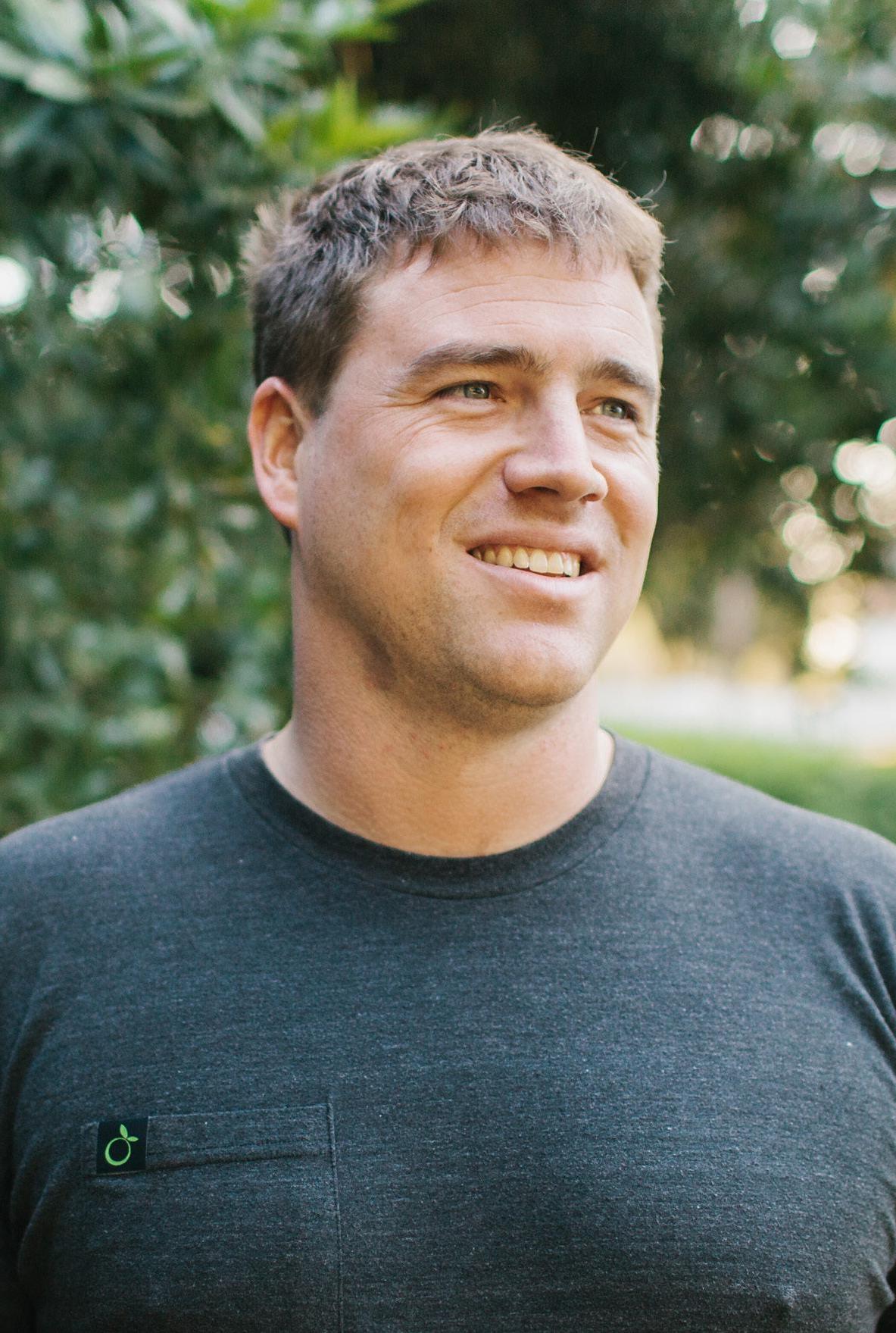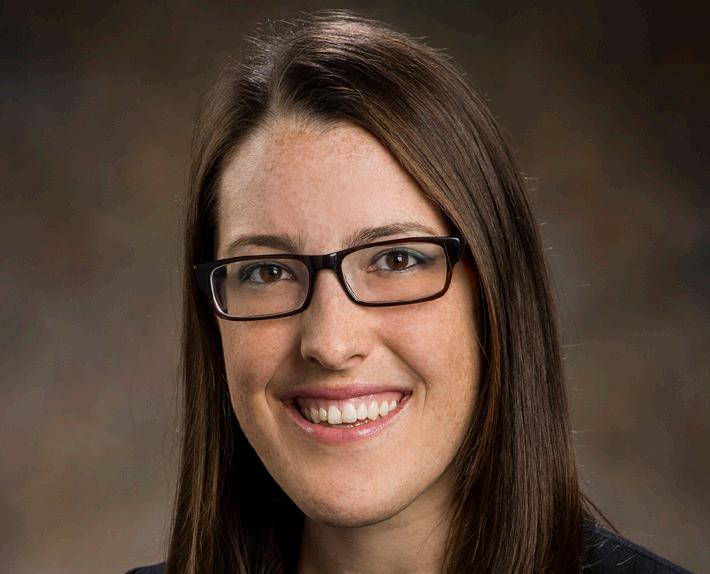
6 minute read
A Ripe Solution To End Hunger
by Hannah Diorio-Toth
According to the Food and Agricultural Organization of the United Nations, approximately 795 million people go undernourished daily. That’s about one in nine people—a staggering statistic. Even more shocking is that the world is producing more than enough food to feed the entire population, but one third of food produced is wasted, often due to spoilage.
When Materials Science and Engineering alum James Rogers (B.S. MSE, BME, ‘07) learned of this alarming reality, he decided to make a difference. “It’s shocking that we are throwing away so much produce. By some reports, fifty percent here in the United States is lost!” says Rogers. “So I thought, ‘what is causing this produce to spoil?’”
The answer brought memories of Rogers’ undergraduate materials science courses flooding back to him. The two primary causes of produce spoilage, oxidation and water loss, also cause iron to rust. At Carnegie Mellon, Rogers learned how scientists created stainless steel to be rust resistant: they add specific kinds of atoms into the iron so that the atoms react with oxygen on the iron’s surface to form a thin protective barrier.
“The question became, ‘Can we solve the oxidation problem for produce the same way that the challenge was solved for stainless steel, by creating a thin barrier on the outside of the produce,’” explains Rogers.
The result from his inquiry was an edible barrier that increases the shelf life of produce two to five times. Made entirely from unused plant materials, the protectant is natural, clear, tasteless and odorless. This technology is the backbone of Rogers’ company, Apeel Sciences, which is based in Santa Barbara, California. Roger founded the company in 2012 while finishing his Ph.D. in Materials Science at University of California, Santa Barbara.
This increase in shelf life can have a huge impact in developing countries where inadequate infrastructure and no access to refrigeration makes it difficult to keep produce fresh. Rogers is currently working to take the technology that he developed for fruits like strawberries and tailor it to crops relevant in developing countries in South America and sub-Saharan Africa. His first target is cassava, a large root vegetable that is a staple in the diet of millions of people in the developing world. Unfortunately, cassava only has a shelf life of about 48 hours, which makes the storing and transporting of cassava difficult. With a $1.5M grant and valuable mentoring from the Bill and Melinda Gates Foundation, Rogers and his team have begun working with the root to extend its shelf life and provide better nutrition to some of the world’s poorest communities and access to market.
“Carnegie Mellon provided me with a broad exposure to a diversity of problems and a fundamental understanding of the underlying concepts of materials science,” says Rogers. “When I got to graduate school, I discovered this problem of produce preservation, but I already had the vocabulary and core understanding that was developed during my undergraduate studies. I would certainly be at a different place in my life if I didn’t go to Carnegie Mellon.”
The “6 Trillion” Dollar Man
Researchers from every department in the College of Engineering are working to build a better you. Below are a few examples.
BRAIN
• Brain-computer interfaces • Brain imaging • Brain cell mechanics • Polymers and nanotechnology for brain-machine interfaces • Transport of cargos in nervous system • Neuromorphic computing
BREAST
• Breast cancer automated pathology • Breast cancer imaging and monitoring
LUNGS
• Artificial lung
GASTROINTESTINAL TRACT
• Bacterial microbots • Inflammatory bowel disease • Liver/diabetes • Swalloable electronics
MEDICINE
• Drug delivery • Cryopreservation and transplant medicine
CANCER TREATMENT
• Cancer cell signaling models • Cryosurgery • Hyperthermia • Interstital photodynamic therapy • Thermal surgery education
EYES AND EARS
• Biometrics • Cornea tissue engineering • Retinal implants • Ear infection diagnosis
HEART AND BLOOD
• Cardiac assist devices • Cardiac tissue engineering • Cardiac mechanics and imaging • Detection of malaria • Magnetic resonance image processing
BONES AND MUSCLES
• Bone imaging • Bone regeneration • Bone surgery • Emery Dreyfus muscular dystrophy • Implantable sensors • Muscle contraction sensing and human body motion capture
SKIN
• Artificial skin • Engineering skin tissue • Wound healing
TISSUE
• Tissue on a chip • Assigning synthetic myosin, building blocks of muscle • Growing vascularized tissue • Tissue image analysis
LIMBS
• Artificial hip lubrication • Exoskeleton
Office of the Dean College of Engineering Carnegie Mellon University Pittsburgh, Pennsylvania 15213-3890
www.engineering.cmu.edu Nonprofit Org. U.S. Postage PAID Permit No. 251
Final Words

STUDENT
Colt Montgomery
PhD Mechanical Engineering
As 3D printing technology and the ability to print in a variety of metal alloys become mainstream, the price of the technology drops and more businesses start to take advantage of the ability, design for manufacturing will drastically change. Corporations such as General Electric are already starting to use the ability to 3D print metals to design and build more functional parts that save weight as well as improve performance. As the industry develops, other companies will likely follow suit and then small businesses, if the price point drops low enough. This will open a new avenue for the manufacture of highly complex metal parts in low volumes without the expense of molds or complex machining. In addition to the ability to produce complex geometries, 3D printing of metals allows the production of structures that were previously impossible to make, such as cellular meshes in three dimensions. It is a very exciting prospect to be at the forefront of a new industrial revolution that has such strong roots here at Carnegie Mellon! With respect to manufacturing strategies, 3D printing of metals will soon allow the tailoring of material microstructure and properties at every location in a part. Traditional processes cannot do this. Our research is showing machine users how to achieve this and more. With respect to business opportunities, there will be a great need for software to help guide engineers in the vastly more complicated design process for 3-D printed parts. That includes guiding part design that has few limits on geometric complexity and guiding process design that tailors the process to the part. It also includes integrating cost metrics into the design process – so that the many options for making parts by 3D printing are filtered based on reducing cost. 3D printing with metals seems to be infiltrating many areas of the manufacturing community. The key to success in implementation of 3D printing with metals is the identification of the applications that can best exploit the complexity of design available. However, increased complexity in design may require many design iterations. A key strategy in manufacturing is the ability to retool quickly to accommodate design changes. The relatively fast turn around time and low tooling requirements of the 3D printing process allows design changes to be welcomed for continuous improvement without incurring increased manufacturing costs. The low tooling requirements also provide the ability to easily customize small batch parts for a given application. New business opportunities lie in the niche markets. Applications that would not traditionally seek industrial manufacturing technologies are able to achieve high quality parts with low overhead.
What new strategies for manufacturing or entirely new business opportunities do you envision 3D printing with metals will allow?

FACULTY
Jack Beuth
Professor, Mechanical Engineering

ALUMNAE
Joy Gockel, PhD
Assistant Professor Mechanical and Materials Engineering Wright State University PhD MechE ‘14










